- Home
- IVD
- By Technology Types
- By Diseases Types
- By Product Types
- Research
- Resource
- Distributors
- Company
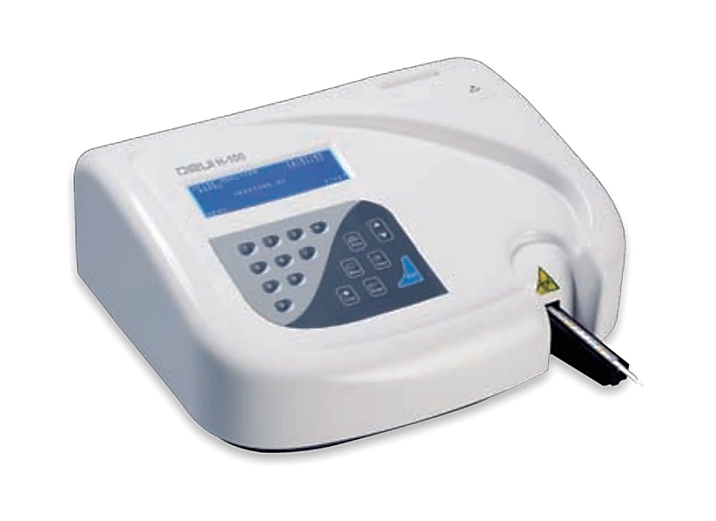
Adopting the advanced “high luminosity cold light source reflection determination” technology, the DIRUI urine analyzer has the specialties of resisting the interference of the ambient light and has a longer lifespan. It can finish the test of biochemical components in urine within 30 seconds, and it can also revise the effects on the test result caused by ambient temperature, ambient light, acid-base scale, and abnormally colored samples. It can also connect with the urine sediment analyzer.
The product is a semi-automated instrument for the semi-quantitative analysis of chemical components in human urine. It can screen normal people and patients with urine-related diseases. The product has no independent measuring function and uses the supporting reagent strips for urinalysis manufactured by DIRUI to finish testing. Detectable chemical indicators include (vitamin C (VC), microalbumin (MALB), creatinine (Cr) and urinary calcium (Ca) are optional): urobilinogen, bilirubin, ketone body, creatinine, blood, protein, microalbumin, nitrite, leukocyte, glucose, specific gravity (colorimetry), pH, vitamin C, and urinary calcium.
| Test Items | Test Speed | Storage | Functions | Dimensions | Power | N/W | |
|
Urobilinogen Bilirubin Ketone Blood Protein Microalbumin Nitrite Leucocytes Glucose Specific Gravity pH Vitamin C |
UBG BIL KET BLD PRO MALB NIT LEU GLU SG pH VC |
60 t/h or 120 t/h |
5000 records |
Calibration Database Query Speed Switch Sequence Setting Language Setting Time Setting Status Setting Date Format Units Selection Critical Value Setting |
385 mm×337 mm×166 mm |
40 VA | 3.9 kg |
Normal Working Conditions:
(1) Ambient Temperature: 15°C~35°C
(2) Relative Humidity: no more than 75%
(3) Atmospheric pressure: 76 kPa~106 kPa
(4) Power Supply: 100-240 V~, 50/60 Hz
(5) Light: avoid direct sunlight.
The analyzer uses the method of colorimetry of light against an electronic signal, according to color changes of testing light against a strip reflection pad to determine the biochemical content of urine. Four kinds of mono-light will scan the reaction area of the strip, and then, change the signal into an electronic signal. The electronic signal will execute A/D conversion, and adopt the convert data to calculate the reflectivity to determine the biochemistry content of urine. Adopt the double-wavelength test mode in the application. That is to obtain the final test data by the ratio of the reflectivity (reflectivity refers to the reflex of mono-light on the strip pad). The formula is as follows:

| R | Test data of strip pad |
| Tr | Reflection intensity of reference light against strip pad |
| Cr | Reflection intensity of reference light against the white benchmark |
| Tm | Reflection intensity of testing light against strip pad |
| Cm | Reflection intensity of testing light against the white benchmark |
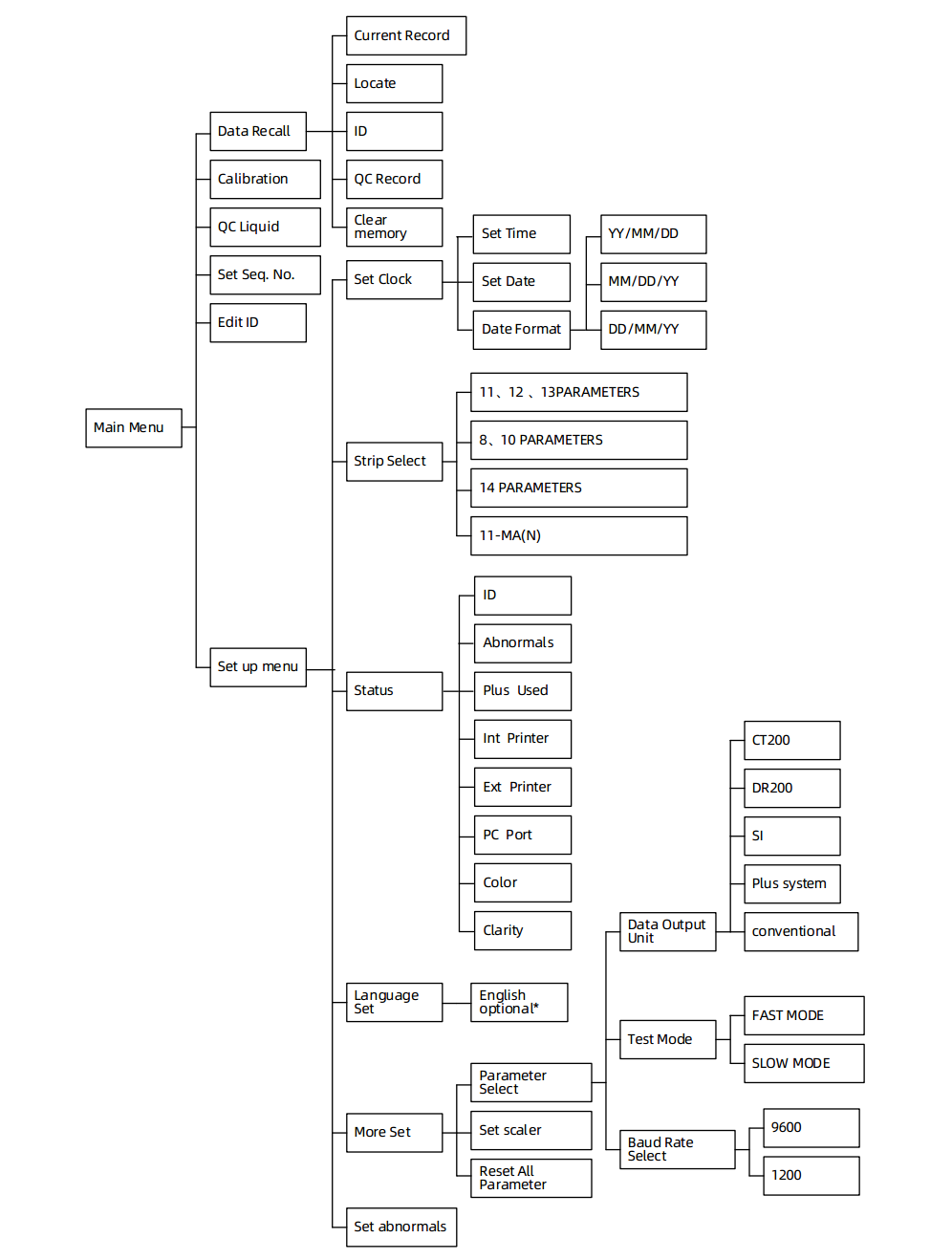
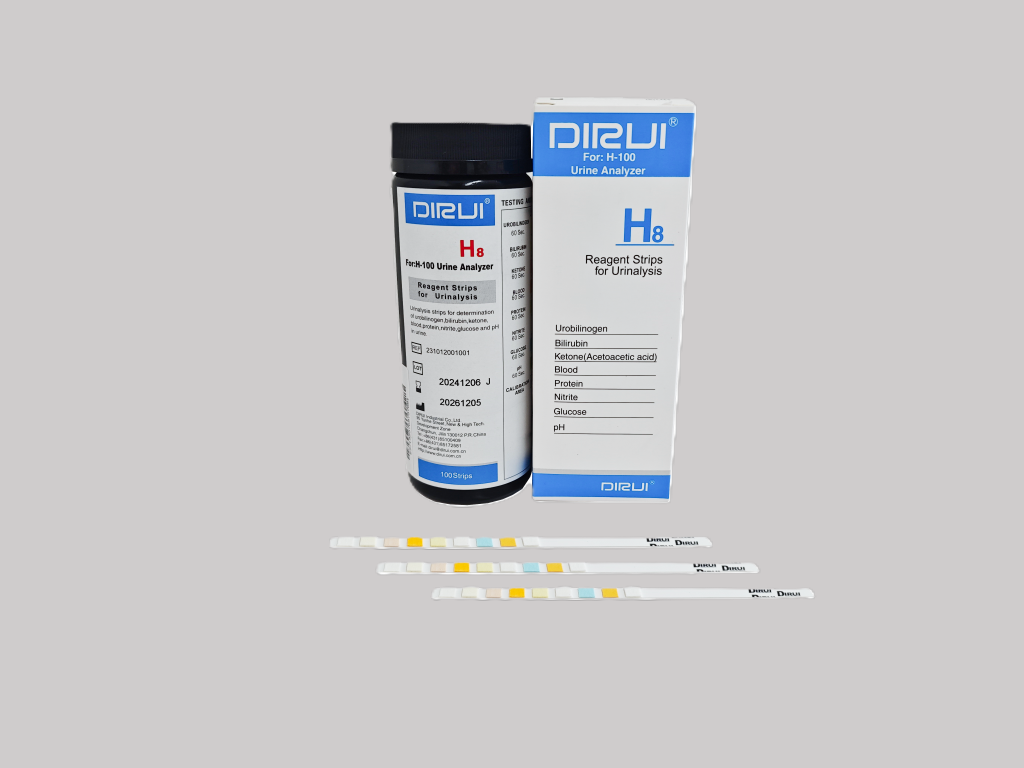
Cat. No. CU-HMM-0001
Spec: 100 Strips/bottle
DIRUI Urine Strips-H8
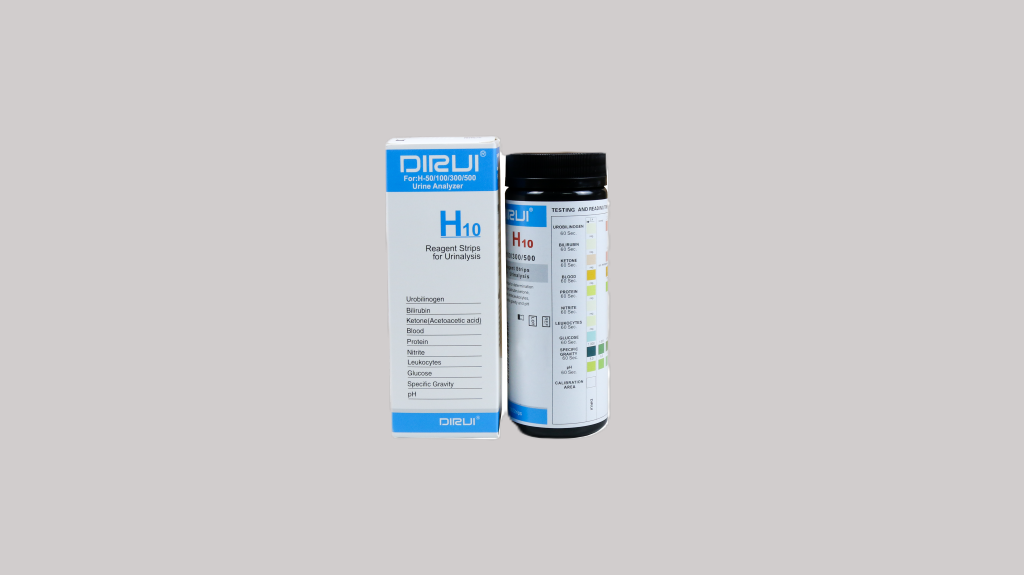
Cat. No. CS-HMM-0002
Spec: 100 Strips/bottle
DIRUI Urine Strips-H10

Cat. No. CS-HMM-0003
Spec: 100 Strips/bottle
DIRUI Urine Strips-H11
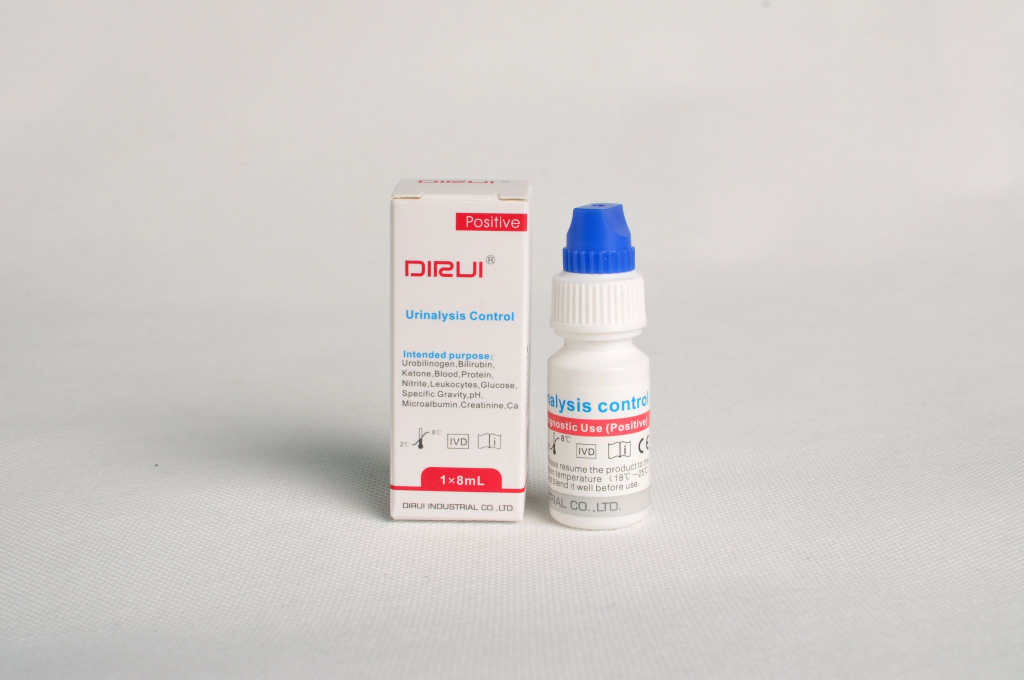
Cat. No. CS-HMM-0004
Spec: 100 Strips/bottle
DIRUI Urinalysis Control (Positive)
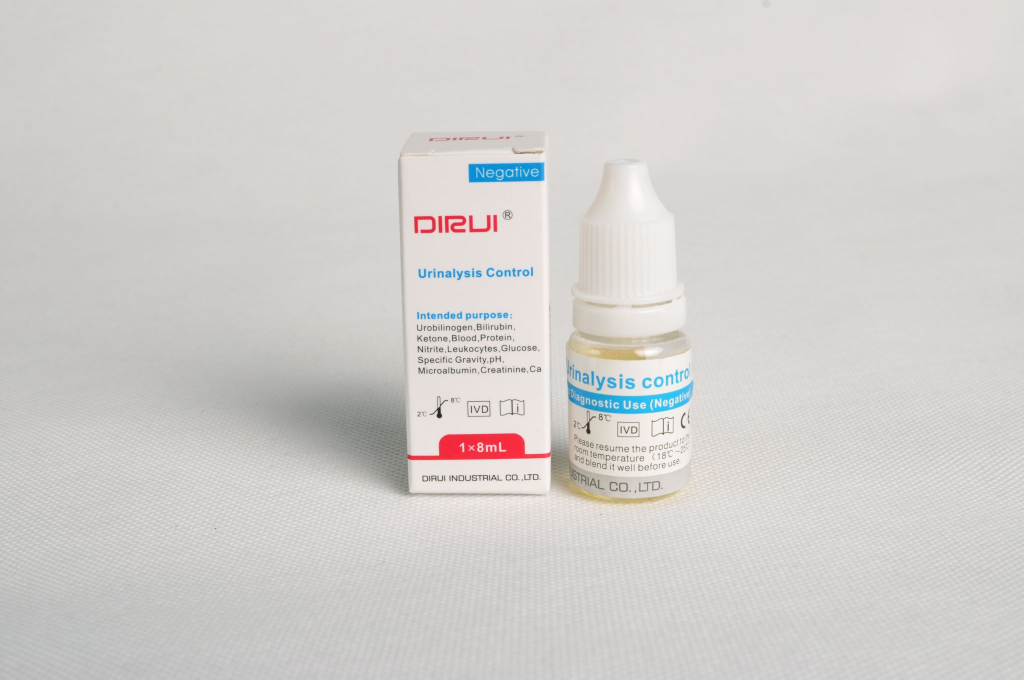
Cat. No. CS-HMM-0005
Spec: 100 Strips/bottle
DIRUI Urinalysis Control (Negative)
|
There is no product in your cart. |